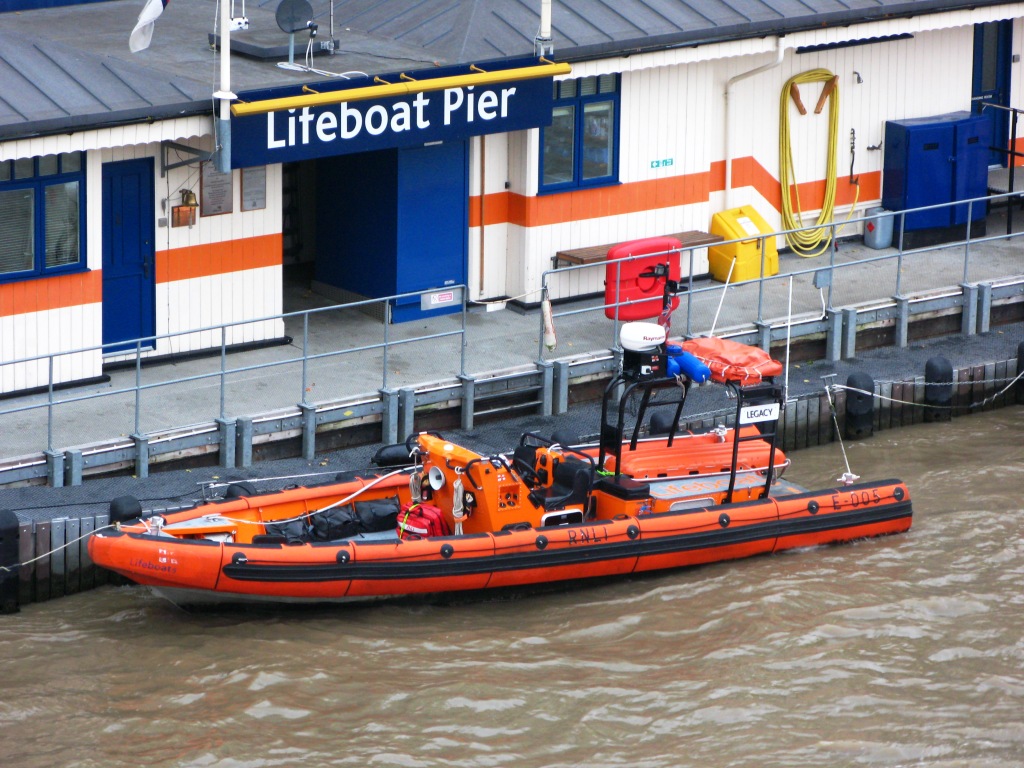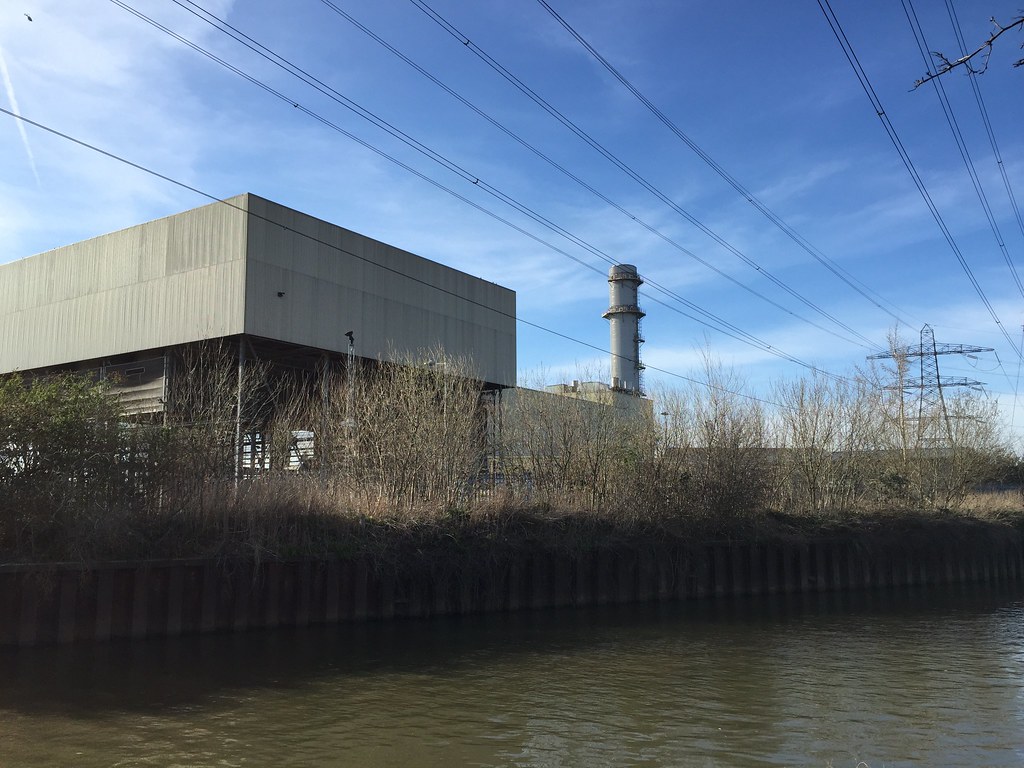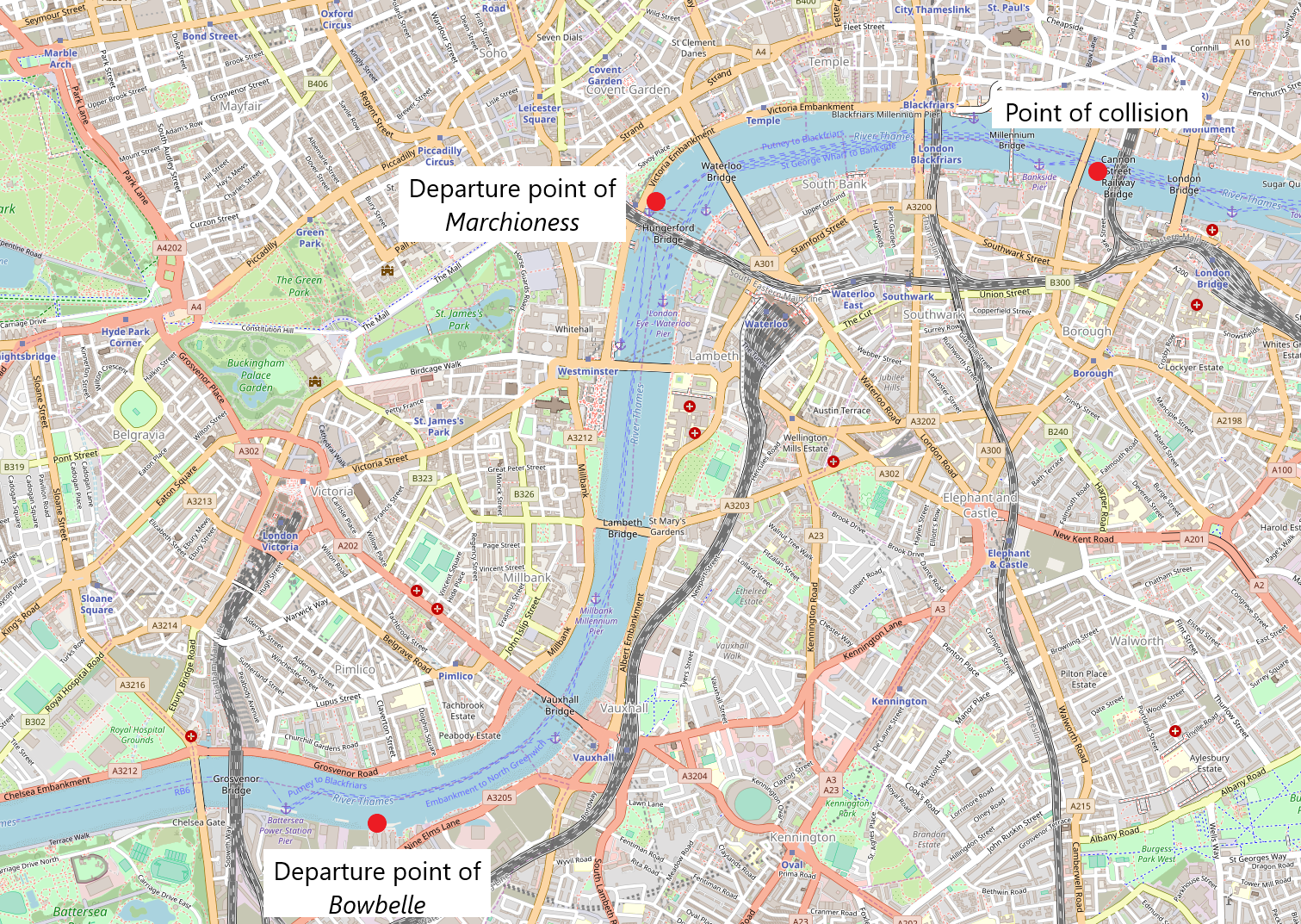|
Tower Lifeboat Station
The Tower Lifeboat Station is a lifeboat station on the River Thames in London, UK, operated by the Royal National Lifeboat Institution (RNLI). It is located at Victoria Embankment on the North Bank of the Thames, next to Waterloo Bridge. The pier takes its name from the original RNLI lifeboat station which opened in 2002 further downstream at Tower Pier, next to the Tower of London. In 2006 the lifeboat station moved to its present location at Waterloo Pier, formerly known as the Waterloo Police Pier. History A new search and rescue service for the River Thames was announced on 22 January 2001. The RNLI was asked by the Government to provide lifeboat cover, the first time it had been specifically asked to cover a river rather than estuarial waters. This came as a result of the findings of the Thames Safety Inquiries into the collision between the pleasure cruiser ''Marchioness'' and the dredger ''Bowbelle'', which resulted in the loss of 51 lives in 1989. In 2002 a lifebo ... [...More Info...] [...Related Items...] OR: [Wikipedia] [Google] [Baidu] |
England
England is a country that is part of the United Kingdom. It shares land borders with Wales to its west and Scotland to its north. The Irish Sea lies northwest and the Celtic Sea to the southwest. It is separated from continental Europe by the North Sea to the east and the English Channel to the south. The country covers five-eighths of the island of Great Britain, which lies in the North Atlantic, and includes over 100 smaller islands, such as the Isles of Scilly and the Isle of Wight. The area now called England was first inhabited by modern humans during the Upper Paleolithic period, but takes its name from the Angles, a Germanic tribe deriving its name from the Anglia peninsula, who settled during the 5th and 6th centuries. England became a unified state in the 10th century and has had a significant cultural and legal impact on the wider world since the Age of Discovery, which began during the 15th century. The English language, the Anglican Church, and Engli ... [...More Info...] [...Related Items...] OR: [Wikipedia] [Google] [Baidu] |
Dredger
Dredging is the excavation of material from a water environment. Possible reasons for dredging include improving existing water features; reshaping land and water features to alter drainage, navigability, and commercial use; constructing dams, dikes, and other controls for streams and shorelines; and recovering valuable mineral deposits or marine life having commercial value. In all but a few situations the excavation is undertaken by a specialist floating plant, known as a dredger. Dredging is carried out in many different locations and for many different purposes, but the main objectives are usually to recover material of value or use, or to create a greater depth of water. Dredges have been classified as suction or mechanical. Dredging has significant environmental impacts: it can disturb marine sediments, leading to both short- and long-term water pollution, destroy important seabed ecosystems, and can release human-sourced toxins captured in the sediment. Descriptio ... [...More Info...] [...Related Items...] OR: [Wikipedia] [Google] [Baidu] |
Piers In London
Piers may refer to: * Pier, a raised structure over a body of water * Pier (architecture), an architectural support * Piers (name), a given name and surname (including lists of people with the name) * Piers baronets, two titles, in the baronetages of Ireland and Nova Scotia * Piers Island, British Columbia, Canada * PIERS: The Port Import/Export Reporting Service, an American trade intelligence company See also * Pier (other) * Pierres (other) * Pierse * Pierce (other) Pierce may refer to: Places Canada * Pierce Range, a mountain range on Vancouver Island, British Columbia United States * Pierce, Colorado * Pierce, Idaho * Pierce, Illinois * Pierce, Kentucky * Pierce, Nebraska * Pierce, Texas * Pierce, West ... * Peirse (other) {{disambiguation ... [...More Info...] [...Related Items...] OR: [Wikipedia] [Google] [Baidu] |
Infrastructure In London
The utility infrastructure of London, England comprises a range of services and facilities that support and enable the functioning of London as a world city. Infrastructure includes facilities associated with products and materials that are consumed such as electricity, gas, water, heating and liquid fuels; materials that are produced such as sewage and solid waste; and facilities that enable communication and connectivity – telecommunications. The historical background of the infrastructure provides the context of how these facilities are structured and currently operate. Electricity History Early electricity supplies in London were for public, commercial and domestic lighting. The generation and supply of electricity required authorisation from the Board of Trade. Such authorisation generally limited an electricity undertaking (a company, local authority or person) to a municipal authority area. The first sustainable long-term undertaking in London was the London Electrici ... [...More Info...] [...Related Items...] OR: [Wikipedia] [Google] [Baidu] |
London River Services
London River Services Limited is a division of Transport for London (TfL), which manages passenger transport—leisure-oriented tourist services and commuter services—on the River Thames in London. It does not own or operate any boats itself (except for the Woolwich Ferry), but licenses the services of operators. River service had been a common means of transport in London for centuries, but died off in the early 1900s, as transportation was enhanced (and river traffic somewhat blocked) with a proliferation of bridges and tunnels. With these numerous north–south crossings of the Thames, which is generally no more than 300m wide as it runs through central London, the revival of river boat services in London therefore mostly travel east or west along the Thames rather than across it; the only major cross-river ferry services are to be found further downstream where the river is wider, and there are far fewer bridge/tunnel crossings. The decision to revive London's river ser ... [...More Info...] [...Related Items...] OR: [Wikipedia] [Google] [Baidu] |
Lifeboat E-005 Legacy
Lifeboat may refer to: Rescue vessels * Lifeboat (shipboard), a small craft aboard a ship to allow for emergency escape * Lifeboat (rescue), a boat designed for sea rescues * Airborne lifeboat, an air-dropped boat used to save downed airmen Art and entertainment * ''Lifeboat'' (1944 film), a movie directed by Alfred Hitchcock * ''Lifeboat'' (2018 film), a documentary * "Lifeboat" (''Stargate SG-1''), a television episode from the TV series * Lifeboat sketch, a sketch shown on ''Monty Python's Flying Circus'' * ''Lifeboat'', a 1972 album by the Sutherland Brothers * ''Lifeboat'', a 2008 album by Jimmy Herring * "Lifeboats", a song on Snow Patrol's 2008 album, '' A Hundred Million Suns'' * "Lifeboat", a song from '' Heathers: The Musical'' Other uses * ''Lifeboat'', journal of the Royal National Lifeboat Institution * Lifeboat ethics, proposed by Garret Hardin based on the metaphor of a lifeboat * Lifeboat Associates, a software distributor and magazine publisher in ... [...More Info...] [...Related Items...] OR: [Wikipedia] [Google] [Baidu] |
Thames Barrier
The Thames Barrier is a retractable barrier system built to protect the floodplain of most of Greater London from exceptionally high tides and storm surges moving up from the North Sea. It has been operational since 1982. When needed, it is closed (raised) during high tide; at low tide, it can be opened to restore the river's flow towards the sea. Built about east of the Isle of Dogs, its northern bank is in Silvertown in the London Borough of Newham and its southern bank is in the New Charlton area of the Royal Borough of Greenwich. History Background Flooding in London has been a problem since Roman times. In 1954, the Waverley Committee, established to investigate the serious North Sea flood of 1953 which affected parts of the Thames Estuary and parts of London, recommended that "as an alternative to raising the banks, the possibility and cost of erecting a structure across the Thames which could be closed in a surge should be urgently investigated". A number of des ... [...More Info...] [...Related Items...] OR: [Wikipedia] [Google] [Baidu] |
Port Of London Authority
The Port of London Authority (PLA) is a self-funding public trust established on 31 March 1909 in accordance with the Port of London Act 1908 to govern the Port of London. Its responsibility extends over the Tideway of the River Thames and its continuation (the Kent/Essex strait). It maintains and supervises navigation, and protects the river's environment. The PLA originally operated all enclosed dock systems on the river (except the Regent's Canal Dock), but these have long been closed to commercial traffic, with the exception of Port of Tilbury, which was privatised in 1992. It inherited the private police forces of the companies which had previously run the docks, reorganising them into a single Port of London Authority Police. Finance The PLA receives no funding from the government and is entirely self-financing. Revenues are raised from conservancy charges on vessels and cargo, pilotage charges, annual port dues, hydrographic services, river works licence fees and ... [...More Info...] [...Related Items...] OR: [Wikipedia] [Google] [Baidu] |
Maritime And Coastguard Agency
The Maritime and Coastguard Agency (MCA) is an executive agency of the United Kingdom that responsible for implementing British and international maritime law and safety policy. It works to prevent the loss of lives at sea and to prevent marine pollution. It is a subsidiary executive agency of the UK Department for Transport and responsible through the Secretary of State for Transport to Parliament. It is also responsible for land based search and rescue helicopter operations since 2015.About us, MCA GOV.UK. Retrieved 18 March 2016. Its motto is ''"Safer Lives, Safer Ships, Cleaner Seas"''. The organisation is currently led by Damien Oliver. Responsibilities Its responsibilities include coordinating |
E-class Lifeboat
The E-class lifeboat forms part of the RNLI fleet in the United Kingdom, operating exclusively in the tidal reach of the River Thames in London. The class was introduced in 2002 to serve the tidal reach of the River Thames, which had not previously been covered by an RNLI rescue service, as a result of a much delayed enquiry into the Marchioness disaster in 1989, in which 51 people died. The enquiry criticised the lack of a rescue service for the tidal Thames, and the UK government asked the Maritime and Coastguard Agency, the Port of London Authority and the RNLI to work together to set up a dedicated Search and Rescue service for this stretch of the river. There are two different versions of the E-class, described as the mark I and mark II. The original intention was that the mark II boats would replace the mark Is, but building of the last two mark Is has been put on hold and there are currently two mark Is and three mark IIs in use, split between Chiswick Lifeboat Station to ... [...More Info...] [...Related Items...] OR: [Wikipedia] [Google] [Baidu] |
Marchioness Disaster
The ''Marchioness'' disaster was a collision between two vessels on the River Thames in London in the early hours of 20 August 1989, which resulted in the deaths of 51 people. The pleasure steamer ''Marchioness'' sank after being hit twice by the dredger ''Bowbelle'' at about 1:46 am, between Cannon Street railway bridge and Southwark Bridge. ''Marchioness'' had been hired for the evening for a birthday party and had about 130 people on board, four of whom were crew and bar staff. Both vessels were heading downstream, against the tide, ''Bowbelle'' travelling faster than the smaller vessel. Although the exact paths taken by the ships, and the precise series of events and their locations, are unknown, the subsequent inquiry considered it likely that ''Bowbelle'' struck ''Marchioness'' from the rear, causing the latter to turn to port, where she was hit again, then pushed along, turning over and being pushed under ''Bowbelle''s bow. It took thirty seconds for ''Marchio ... [...More Info...] [...Related Items...] OR: [Wikipedia] [Google] [Baidu] |
RNLI
The Royal National Lifeboat Institution (RNLI) is the largest charity that saves lives at sea around the coasts of the United Kingdom, the Republic of Ireland, the Channel Islands, and the Isle of Man, as well as on some inland waterways. It is one of several lifeboat services operating in the same area. Founded in 1824 as the National Institution for the Preservation of Life from Shipwreck, soon afterwards becoming the Royal National Institution for the Preservation of Life from Shipwreck, under the patronage of King George IV. On 5 October 1854, the institution’s name was changed to its current name (RNLI), and in 1860 was granted a royal charter. The RNLI is a charity in the UK and in the Republic of Ireland and has enjoyed royal patronage since its foundation, the most recent being Queen Elizabeth II until her death on 8 September 2022. The RNLI is principally funded by legacies (65%) and donations (28%), with the remainder from merchandising and investment. Most of t ... [...More Info...] [...Related Items...] OR: [Wikipedia] [Google] [Baidu] |


.png)





